Writing Teaching Resources
Teaching writing strategies and the writing process this school year? Explore a comprehensive collection of teacher resources for elementary and middle school ELA teachers — all created by teachers!
Stocked with graphic organizers, writing prompts, templates, worksheets and so much more, this collection of printable and digital activities is designed to help you as you help your students become more effective communicators and unleash their creativity and imagination.
Save time on lesson planning with resources that have been through a careful review process by an expert member of our teacher team to ensure they're ready for your classroom and your students!
Are you looking for tips and tricks to add to your teacher toolkit this school year? Read on for a primer from our teacher team, including engaging activities for teaching writing in elementary and middle school and a look at some of the different writing strategies your students will need to learn.
11 Writing Strategies Kids Should Know by the End of Middle School
We can't talk about teaching kids to write without talking about the different writing strategies that can help them do just that!
When it comes to teaching our students to become confident writers who articulate their ideas effectively, here are some of the strategies our teacher team prioritizes:
1. Brainstorming
Brainstorming is something we often do in the classroom, and it's a crucial part of learning to generate the ideas that will drive students' writing as they progress through their educational journey. Kids should know how to create a list of potential topics or points related to a particular writing assignment.
With younger students, this is often done as a whole group by writing ideas and points on chart paper. In upper grades, students transition over to using text-based materials to generate ideas and talking points.
2. Outlining
Before diving directly into any assignment, our students should be able to create a structured framework or outline. Teaching students how to create this outline will help them organize their thoughts and arguments for penning their essays, reports and research papers.

3. Using Graphic Organizers
Technically graphic organizers are classroom tools, so you may not think of their use as a writing strategy per se. However, learning to use these tools is another means of providing kids with the tools they need to organize their ideas and information before they sit down to write.
These organizers are particularly useful for expository writing — students can use them to outline main ideas, supporting details, and transitions.
Students can also take advantage of story maps when they are working on narrative writing to plot the key elements of a story, such as characters, setting, conflict, rising action, climax and resolution.
Graphic organizers such as the OREO strategy and hamburger paragraph are also great tools for students to use when working with opinion and persuasive texts.
4. Freewriting
Writer's block is the enemy of creativity, and it can easily frustrate young students who don't know where to begin.
When students freewrite, they write continuously without worrying about grammar or punctuation. This writing strategy can be extremely freeing — hence the name! — and helps frustrated writers move past that writer's block, generating fresh ideas.

5. Peer Editing
Learning to review and provide constructive feedback on each other's work is a great writing strategy to employ in your classroom to help students improve their writing quality and enhance their editing skills.
The strategy allows your students to learn from one another, and it arms them with an important tool they can use well into the future — calling on peers to provide a critical eye to a piece of writing.
6. Using Sensory Language
Working on descriptive writing? With this writing strategy, students engage the reader's senses through vivid and sensory language to create a more immersive experience.
7. Including Transitions and Connectives
As students become more proficient in the writing process, learning to use transitional words and phrases allows them to create smooth transitions between sentences and paragraphs. This strategy makes their writing more coherent and polished.
8. Incorporating Evidence
In persuasive, opinion, and expository writing, students are taught to support their claims with evidence and examples to strengthen their arguments.
It takes some practice to train your students to use evidence in their writing, so it's often a good idea to start with something simple, like the R.A.C.E.S. strategy.
9. Crafting a Thesis Statement
In expository, opinion, and persuasive writing, crafting clear and concise thesis statements that summarize the main point or argument of their essay helps students be more focused and organized in their writing. This strategy can also have the effect of empowering students to express their ideas confidently and persuasively.
10. Incorporating Introductions and Conclusions
With this strategy, students practice crafting effective introductions and conclusions that grab the reader's attention and leave a lasting impression.
11. Following a Revision Checklist
Teaching your students to use a revision checklist is a strategy that will help them be more self-reflective, evaluating their own writing against the checklist criteria and becoming more aware of their strengths and weaknesses.

- Plus Plan
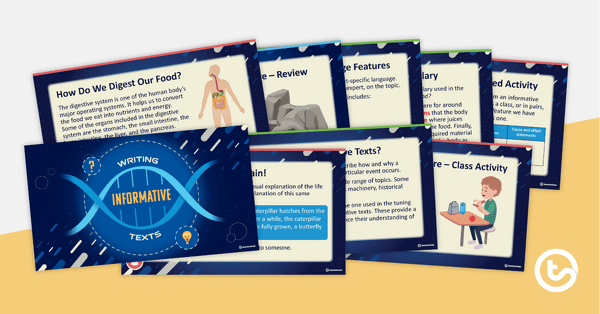
Writing Informative Texts – Teaching Presentation
A 33-slide, editable PowerPoint template to use when teaching your students about informative writing.
- Plus Plan
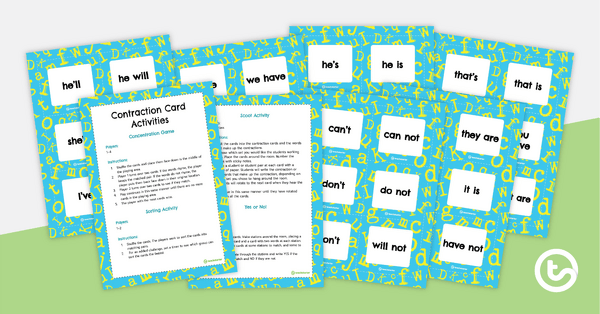
Contraction Activity Cards
A set of 36 contraction matching cards that can be used individually, in pairs or small groups, or as part of a whole-class activity.
- Plus Plan
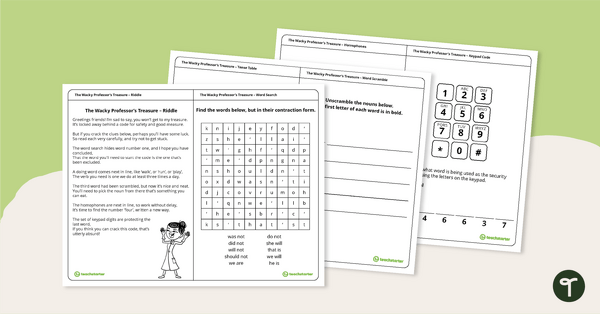
The Wacky Professor's Treasure - Mini Escape Room Activity
A mini escape room activity that allows students to complete grammar tasks, while working together to solve a riddle!
- Plus Plan
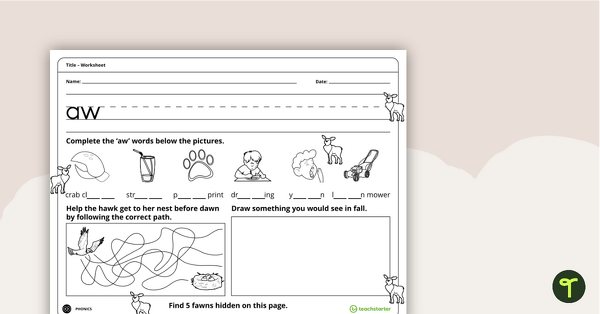
Digraph Handwriting - Worksheets
24 digraph worksheets that focus on handwriting and vocabulary activities.
- Free Plan
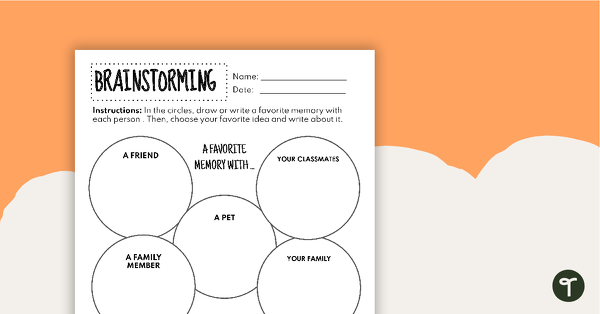
Brainstorming Template - A Favorite Memory With...
A template for brainstorming favorite memories.
- Plus Plan
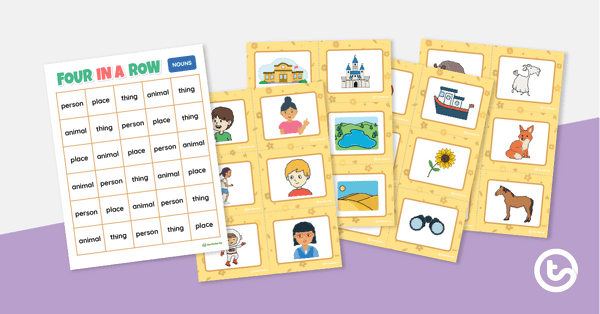
Four In A Row Game - Nouns
Develop noun recognition with this set of 28 noun picture cards that students will identify to get 4 in a row.
- Plus Plan

Revising Our Writing - Adding, Deleting, and Rearranging Worksheet
Practice revising writing by adding, deleting, and rearranging text for substance and clarity.
- Plus Plan
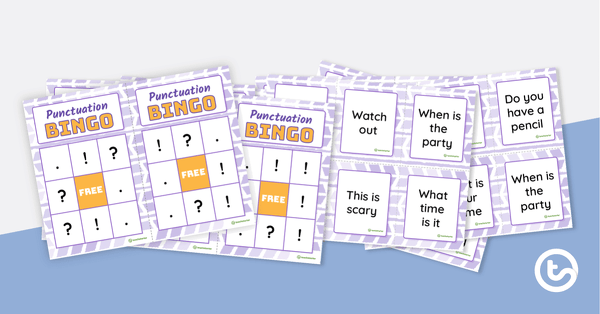
Punctuation BINGO
A set of 20 BINGO game boards and cards to practice recognizing and naming end punctuation.
- Free Plan
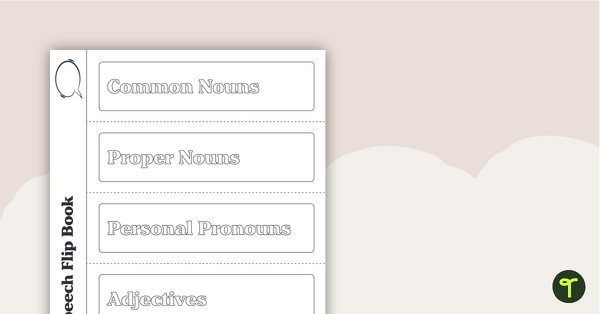
Parts of Speech Flip Book
A flip book to use when learning about parts of speech.
- Free Plan
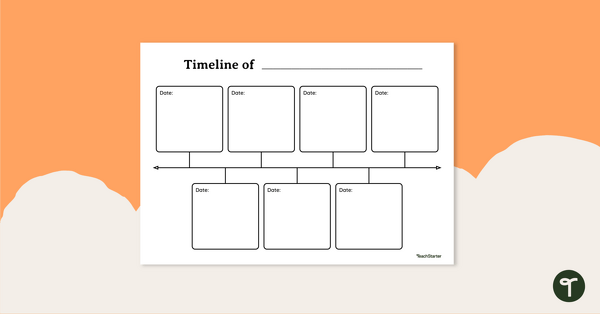
Biography Timeline Template
Use this multipurpose timeline template for a variety of assignments, projects, and more!
- Free Plan
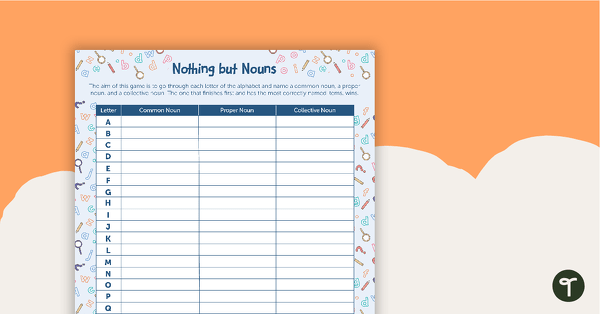
Nothing but Nouns Game
A game to practice working with common, proper, and collective nouns.
- Plus Plan
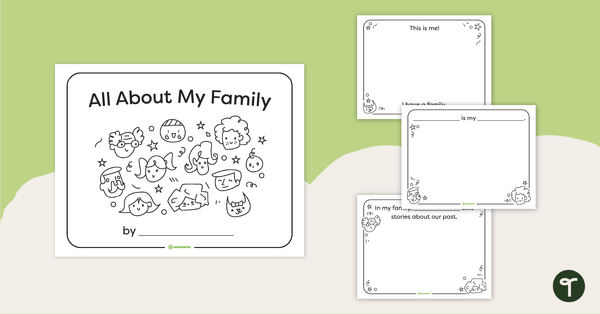
All About My Family Mini Booklet
A template for students to complete a booklet all about their family.
- Plus Plan
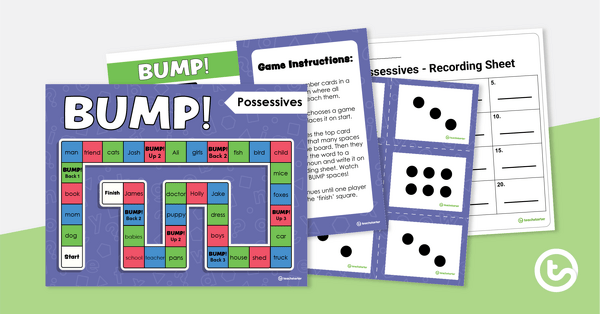
BUMP! Possessives - Board Game
A board game to practice writing possessive nouns using apostrophes.
- Plus Plan
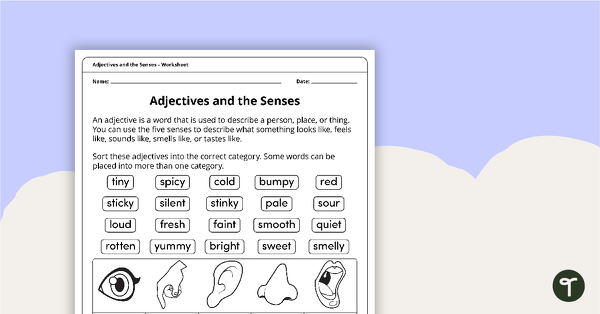
Adjectives and the Senses – Worksheet
Organize adjectives into the most appropriate sense with this cut and paste sorting worksheet.
- Plus Plan
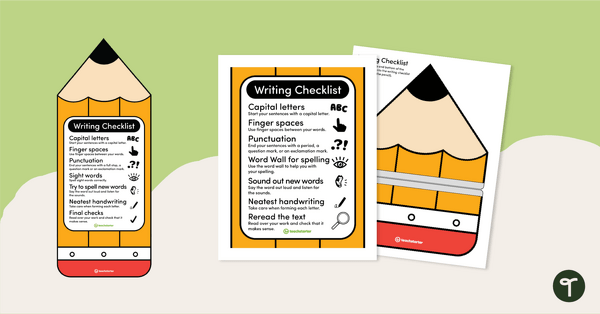
General Writing Checklist (Printable Poster for the Classroom)
A writing checklist poster to use with your primary students across multiple genres.
- Plus Plan

Subject and Object Pronouns Worksheet
Download this 2-page worksheet to get your students using objective and subjective pronouns.
- Plus Plan
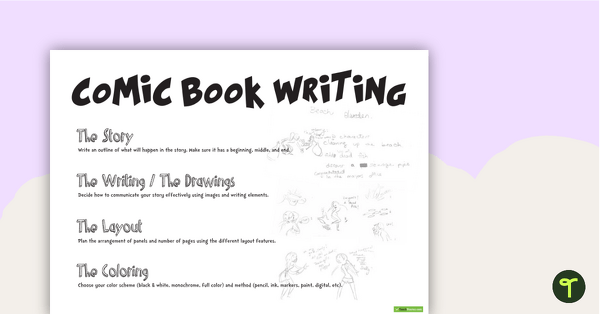
Comic Book Writing Resource Pack
9 pages of resources for creating comic books.
- Plus Plan
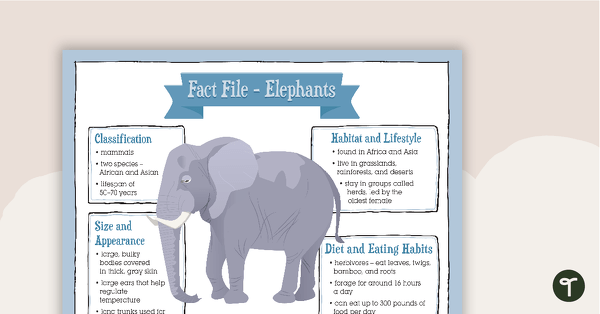
Elephant Fact File and Report Writing Scaffold
Support your students in writing an expository text about elephants with this fact file and writing scaffold.
- Plus Plan
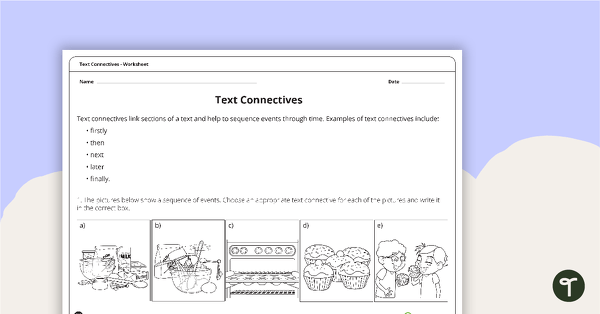
Text Connectives Worksheet
A 2 page worksheet that explores the use of text connectives.
- Plus Plan
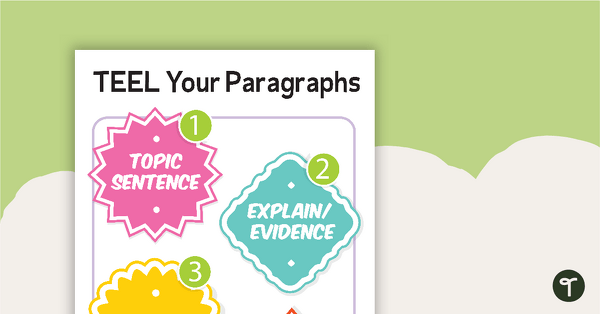
TEEL Paragraph Structure - Poster and Worksheets
A PEEL paragraph technique poster, explanatory worksheet and graphic organizer.
- Plus Plan
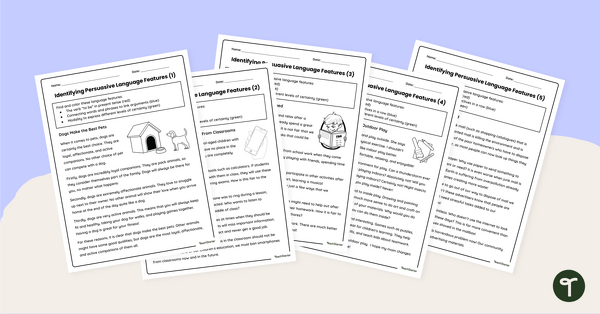
Identifying Persuasive Language Worksheets
Explore persuasive language with your students using this set of five persuasive texts on a variety of age-appropriate topics.
- Plus Plan
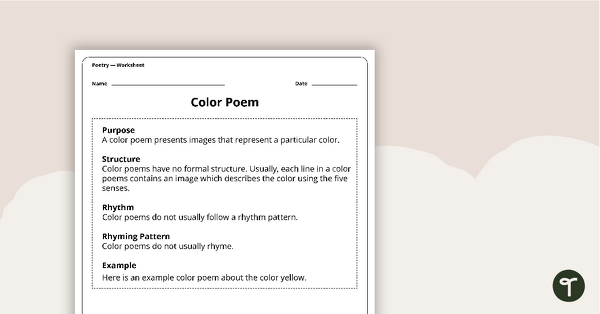
Write a Color Poem Worksheet
Set your students up for success when writing a color poem with this set of scaffolded, easy-to-follow worksheets.
- Plus Plan

Seven Sensational Story Starters PowerPoint
A 10 slide editable PowerPoint template of story starters to use in narrative writing.
- Plus Plan
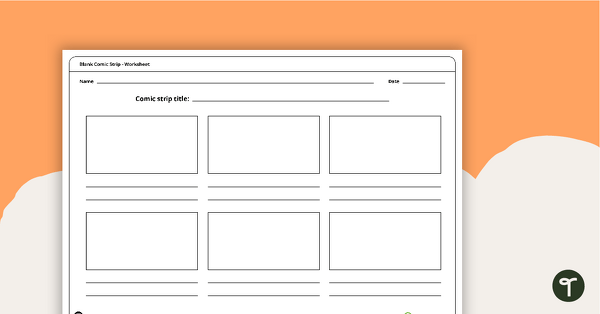
Blank Comic Strip Template
A blank comic strip to use when developing and sequencing ideas for narrative and imaginative writing.
- Plus Plan
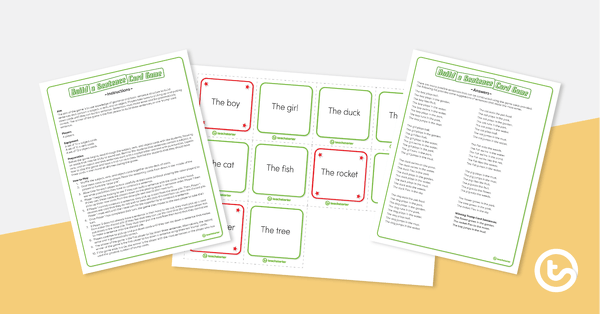
Build a Sentence Card Game
A fun and engaging card game that focuses on building simple sentences that include a subject, verb, and object.
- Plus Plan
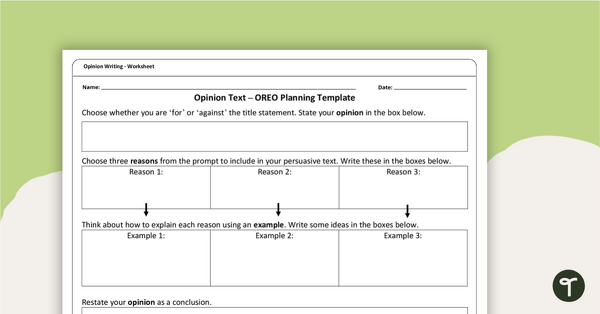
Opinion Text Planning Template (Using OREO)
Use the OREO opinion writing frames to support your student's opinion writing skills.
- Plus Plan
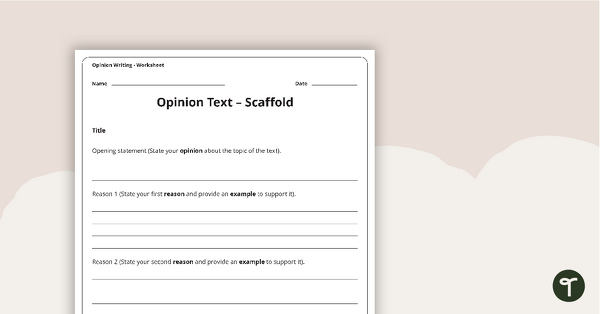
Opinion Texts Writing Scaffold
A one page scaffolding sheet which can be used to write an opinion text.
- Plus Plan
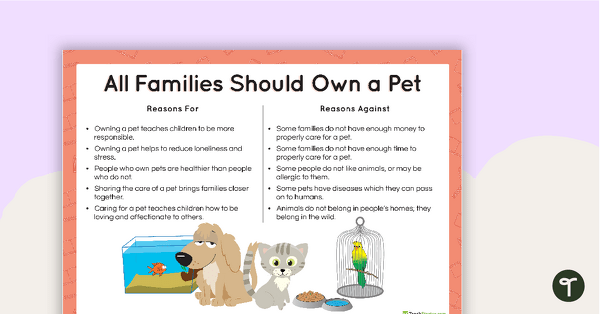
Opinion Texts Writing Task - All Families Should Own a Pet
A writing activity to help students construct a detailed and reasoned opinion text.
- Plus Plan
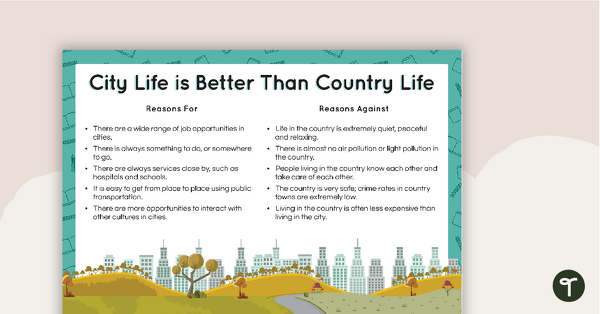
Opinion Texts Writing Task - City Life is Better Than Country Life
A writing activity to help students construct a detailed and reasoned opinion text.
- Plus Plan
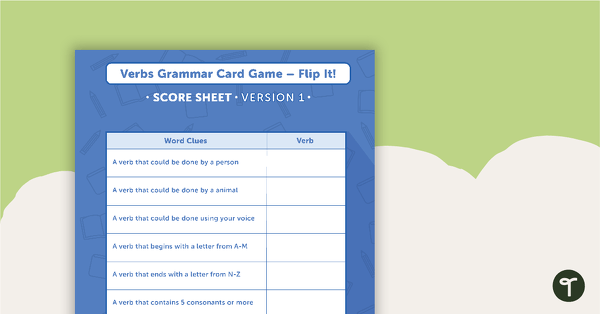
Verb Grammar Card Game - Flip It!
A fun game for students to play in small groups to reinforce their understanding of verbs.
- Plus Plan
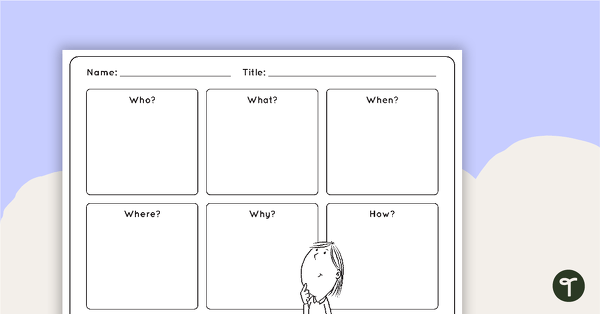
5 Ws and 1 H Planning Worksheet for Narrative Writing
A 5 Ws and 1 H worksheet to use in the classroom.
- Free Plan
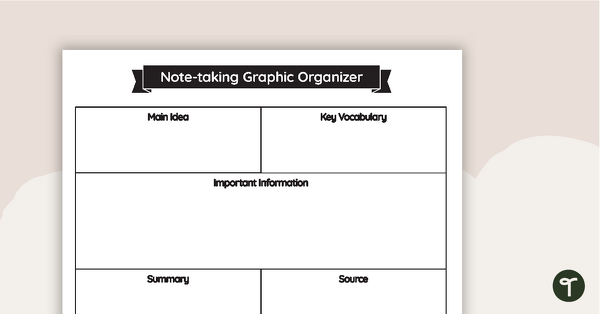
Note-taking Graphic Organizer
A graphic organizer for students to use when taking notes.